
Spray-On Vapor Barriers: The Next Big Thing?
Last Updated: Feb 26, 2025Improving the airtightness of the building envelopes of our homes is one of the essential strategies to reduce residential energy demand and consumption. Today, the average US residential customer uses approximately 909 kWh per month of energy or around 10,909 kWh per year. According to the Energy Information Administration (EIA), each kWh of electricity use emits an average of 0.92 pounds of carbon dioxide. Every year, the average residential house in the United States is responsible for over 10,000 pounds of CO2 emissions that continue to drive global warming.
Heating and cooling account for almost half of the energy we use in our homes. So, stopping unwanted heat transfer between the inside of our homes and the outside environment is a key strategy - for cutting back on energy consumption and the corresponding greenhouse gas emissions. Spray-on vapor barriers and air barriers are often overlooked building elements that can significantly increase the airtightness of our homes. They can reduce our energy bills, protect our insulation, prolong its lifespan, and keep modes and mildews out of our home. This in-depth product guide will take a complete look at spray-on vapor barriers so that you can decide if this might be an option for your new home construction.
Table of Contents
- Vapor Barrier Review
- What Is An Air Barrier?
- What Is a Thermal Barrier?
- What Is An Ignition Barrier?
- What Are Vapor Barriers?
- What Types of Spray-On and Liquid Vapor Barriers Are Available?
- How Much Energy Do Spray-On and Liquid Vapor Barriers Save?
- Are Spray-On and Liquid Vapor Barriers Healthy?
- How Long Do Spray-on and Liquid Vapor Barriers Last?
- What Are The Best Brands of Spray on Vapor Barriers?
- What Are the Best Brands of Liquid Vapor Barriers?
Vapor Barrier Review
Before we get to the definition of vapor barriers, it is essential to look at the differences between often used barriers in home construction. As energy and building codes become increasingly more rigorous, most homes must incorporate several additional "barriers" that protect the house from certain elements. These include air barriers, thermal barriers, ignition barriers, and vapor barriers.
What Is An Air Barrier?
According to the National Center for Appropriate Technology, "an air barrier is a material or assembly of materials that reduces air flow through or into the building envelope." Here at Rise, we have written extensively about the importance of airtight building envelopes. An airtight building envelope is one of the best strategies to lower your home's energy demand and corresponding carbon footprint.
What Is a Thermal Barrier?
As more homeowners and builders begin to switch to spray foam insulation products, building codes are struggling to enact policies that ensure that this high-performance insulation keeps homeowners safe. Thermal barriers refer to materials that are applied between the spray foam insulation and the interior living space. Thermal barriers are a type of fire resistance measure to address the International Resident Code (IRC) requirements. They require that you place a barrier between your home's interior living space and any materials that could be flammable or a fire hazard. These barriers may no longer be required by code in the near future as some spray foam products increase their fire resistance qualities.
What Is An Ignition Barrier?
Ignition barriers are similar to thermal barriers. They are building products that stop hazardous material from igniting, most often in hard-to-access areas like the attic and crawl space.

What Are Vapor Barriers?
Vapor barriers have the primary function of slowing the migration of water vapor into your home. They are one of the primary components of a moisture control strategy for your home. Vapor barriers are different from air barriers in that they have a high degree of water impermeability. For example, most fibrous insulation like cellulose, fiberglass, or sheep's wool is not a complete air barrier. Moisture moves with airflow. These common types of home insulation are often compromised as water moisture saturates the fibrous material, thus decreasing its effectiveness and R-value. Vapor barriers, then, help control the humidity levels in your home and protect certain types of home insulation from becoming compacted due to excess moisture. Many vapor barriers also act as air barriers, as they are applied to the entire home envelope, thus improving the airtightness of the structure.
Until recently, the vast majority of vapor barriers were typically manufactured from polypropylene sheathing. This sheathing, which can look like typical house wrap, acts as an impenetrable barrier that retards vapor infiltration into a home. Vapor barriers are especially effective in a home's foundation, below-grade walls, and floor slabs since they stop soil moisture from entering your home, leading to that stuffy basement smell. Vapor barriers can also effectively prevent radon gas from seeping into your basement and other areas of your home.

What Types of Spray-On and Liquid Vapor Barriers Are Available?
Spray-on and liquid vapor barriers are gaining popularity with homeowners and builders as they tend to lower building costs. Spray-on vapor barriers are made from closed-cell spray foam or liquid products that don't insulate. Open-cell spray foam, which is more affordable than closed-cell foam, does not act as a vapor barrier. Most building codes will require open-cell foam applications to have a separate vapor barrier installed, often 3-mil plastic sheeting. However, closed-cell spray foam can act as a "stand-alone" vapor barrier if it is installed with a minimum of 1.5 inches of thickness. However, some closed-cell foam products will require a minimum of 2.5 inches of thickness as the vapor barrier capability is product-specific. We have written more extensively about the differences between different types of insulation foams here.
Closed-cell spray foam applications, then, can mitigate your home building costs by simultaneously acting as both an air barrier and vapor barrier to the exterior of your house. This product can also allow you to meet your insulation codes all in one product and installation. For an existing home, spray-on vapor barriers with closed-cell foam can also be used to retrofit an existing rubble basement foundation wall with problems with excess moisture infiltration.

How Much Energy Do Spray-On and Liquid Vapor Barriers Save?
When properly installed, spray-on and liquid vapor barriers can help protect your home from excess moisture and humidity levels. This feature keeps your home more comfortable and helps avoid issues with mold and mildew growth. As an "all-in-one" application, closed-cell foam vapor barriers also help to insulate your home and increase the airtightness of the building envelope. Thus, these types of barriers can play a significant role in reducing your home's energy use.
Climate Implications of Spray Foams
However, many spray-on vapor barrier products also come with an enormous (and hidden) environmental footprint. Every spray foam product requires a "blowing agent," which creates the cells or bubbles that allow the product to insulate and protect from moisture. During the application process, some of the blowing agents escape into the atmosphere. Many commonly used blowing agents are made from hydrofluorocarbons (HFCs), which have extremely high global warming potential (GWP). Rise wrote extensively on this topic in our Spray Foam Insulation In-Depth Product Guide. Check it out to learn how to choose the best, low GWP spray foams.

Are Spray-On and Liquid Vapor Barriers Healthy?
All spray foam products are made from a host of strange-sounding chemicals. Some of these include methylene diphenyl diisocyanate (MDI), polymeric methylene diphenyl diisocyanate (pMDI), and a blend of polyols, catalysts, blowing agents, flame retardants, and surfactants. Though this might sound like something you don't want in or around your home, most of these chemicals become completely inert after they "cure," usually within 8-24 hours. The primary health dangers associated with spray-on vapor barriers occur during application. Thus, most homeowners generally trust the application of these products to certified builders who provide their workers with personal protective equipment to limit exposure problems.
The Environmental Protection Agency (EPA) states that the chemicals found in spray-on vapor barriers and other types of spray foam can become volatile (and thus pose a health risk) in the following situations:
- When cutting or trimming the foam, thus creating airborne dust particles;
- When the foam is exposed to heat-generating processes such as welding, drilling, sawing, sanding, etc.;
- During house fires.
Indoor Air Quality Products
Shop home improvement products that work to improve your home's indoor air quality.

Vents TwinFresh Comfo RA1-50-2 Ductless Energy Recovery Ventilator
Vents
In Stock
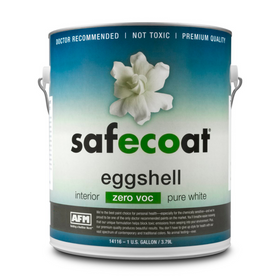
AFM Safecoat Zero VOC Interior Paint - White
AFM Safecoat
In Stock
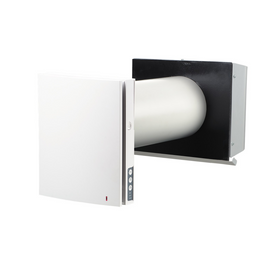
Vents TwinFresh Expert RA1-50-2 Ductless Energy Recovery Ventilator
Vents
In Stock

Vermont Natural Coatings Hemp Oil Wood Finish
Vermont Natural Coatings
In Stock
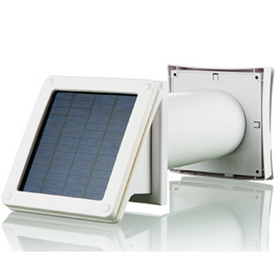
Vents Solar Powered Ductless Fresh Air Wall Vent PSS 102
Vents
In Stock
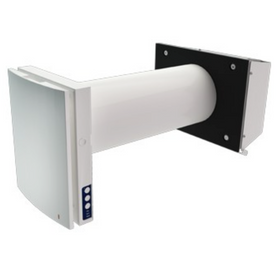
Vents TwinFresh Expert RW1-85-2 V.2 Ductless Energy Recovery Ventilator
Vents
In Stock
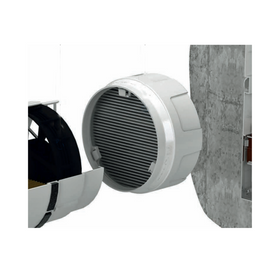
Vents MERV 14 Filter for TwinFresh Expert RA1-50-2
Vents
In Stock
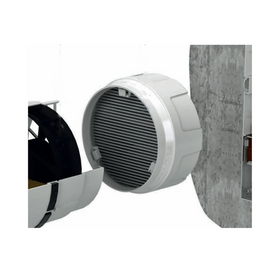
Vents MERV 14 Filter for TwinFresh Comfo RA1-50-2
Vents
In Stock

Hauslane Chef 36" UC-PS18 860 CFM Ducted Undercabinet Range Hood
Hauslane
In Stock
2 Colors
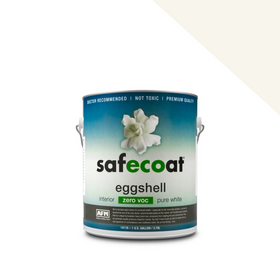
AFM Safecoat Eggshell Interior Paint - Fashion Colors
AFM Safecoat
In Stock
16 Colors

How Long Do Spray-on and Liquid Vapor Barriers Last?
One of the main benefits of spray-on vapor barriers is that they are incredibly durable. The International Association of Certified Home Inspectors finds that spray foam insulation can easily last for more than 80 years or more. When properly installed, a spray-on vapor barrier should offer insulation, airtightness, and moisture protection for the entire lifetime of your house.

What Are The Best Brands of Spray on Vapor Barriers?
As spray foam applications become more mainstream in home construction, more and more companies are manufacturing closed-cell, spray-on vapor barriers. Some of the leading brands today include:
- Natural Polymers: This company manufactures several closed-cell spray foam products that can be used as an effective vapor barrier for your home. The company specializes in using HFO blowing agents that drastically reduce the environmental footprint of their products.
- SWD Urethane: This company also makes several closed-cell foam products, many of which are Greenguard certified for low chemical emissions.
- SealTite Pro from Carlisle Spray Foam: Carlisle is another company making spray-on vapor barriers. Their One Zero closed-cell foam product uses HFO technology optimized for higher yield versus HFC products, has a Global Warming Potential (GWP) of less than one, and an Ozone Depletion Potential (ODP) of zero.

What Are the Best Brands of Liquid Vapor Barriers?
- Intelligent Membranes Passive Purple External: Passive Purple External watertight membrane is developed and marketed by Intelligent Membranes. This company makes several exterior membranes that are extremely "DIY user-friendly." Unlike the products briefly reviewed above, this spray-on vapor barrier does not also act as an insulator. Instead, it functions as a UV-resistant and watertight membrane. You can either spray it on or paint directly onto the external façade of your home. It can work on virtually any exterior cladding and uses an airless spray device. In a single day, one person can easily cover up to 300 square meters of house façade. This product will not allow you to enjoy the extra insulation benefits. But, the "self-applicability" of this product will undoubtedly reduce installation costs while still allowing you to benefit from an additional barrier on the exterior of your home.
- Prosoco Spray Wrap MVP: Prosoco offers a similar product to the one reviewed above. It is a fluid-applied air and water-resistive barrier that stops air and water leakage in cavity walls, masonry veneer construction, as well as in stucco, EIFS, and most other building wall assemblies. Homeowners can use this product as the primary air and vapor barrier over most above-grade wall assemblies. Prosoco MVP minimizes the potential for condensation within walls and easily adheres to most common building surfaces. It is also compatible with most paints, sealants, and self-adhered waterproofing or air barrier components. You can find a local distributor of this product at this link.
- PERM-A-BARRIER® VP is another fluid-applied, one component, acrylic membrane. It cures to form a resilient, monolithic, fully bonded elastomeric sheet when applied to construction surfaces. The product creates a solid barrier against air infiltration to limit energy bills. Also, the Perm-A-Barrier VP is vapor permeable for wall assemblies requiring this "breathable" characteristic. However, it is impermeable to liquid water, which allows the material to act as a water drainage plane.
Instead of going the traditional route and applying building wrap around your home, many builders and homeowners are opting for either closed cell spray foam or latex, paint-style water, and moisture barriers for their homes. Generally speaking, the paint-style vapor barrier membranes will be less expensive than traditional house wrap. Spray foam products that double as vapor barriers will most likely be more expensive. However, you will also be increasing the R-value of the walls of your home.
Tobias Roberts
Tobias runs an agroecology farm and a natural building collective in the mountains of El Salvador. He specializes in earthen construction methods and uses permaculture design methods to integrate structures into the sustainability of the landscape.

